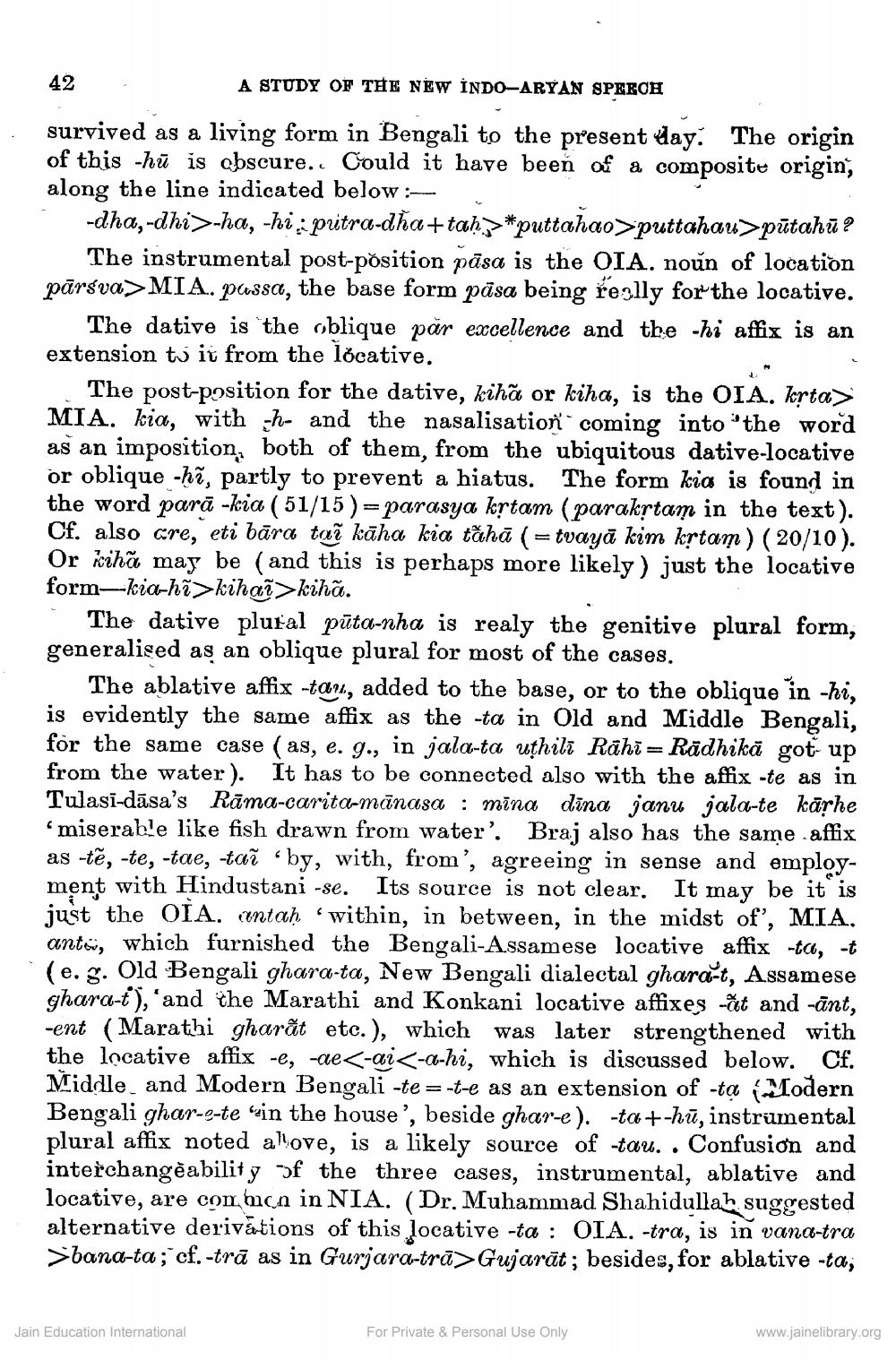________________
42
A STUDY OF THE NEW İNDO-ARYAN SPEECH
survived as a living form in Bengali to the present day. The origin of this -hū is obscure.. Could it have been of a composite origin, along the line indicated below :
-dha,-dhi>-ha, -hi: putra-dha+tah> *puttahao>puttahau>pūtahū ?
The instrumental post-position pāsa is the OIA. noun of location pārsva>MIA. passa, the base form pāsa being really for the locative.
The dative is the oblique par excellence and the -hi affix is an extension to it from the locative.
The post-position for the dative, kihã or kiha, is the OIA. krta> MIA. kia, with sh- and the nasalisation coming into the word as an imposition, both of them, from the ubiquitous dative-locative or oblique -hi, partly to prevent a hiatus. The form kia is found in the word parā -kia ( 51/15)= parasya krtam (parakstam in the text). Cf. also cre, eti bāra taī kāha kia tăhā ( = tvayā kim krtam) (20/10). Or kihã may be (and this is perhaps more likely ) just the locative form-kia-hã>kihaî>kihã.
The dative plural pūta-nha is realy the genitive plural form, generalised as an oblique plural for most of the cases.
The ablative affix -tau, added to the base, or to the oblique in thi, is evidently the same affix as the -ta in Old and Middle Bengali, for the same case (as, e. g., in jala-ta uthili Rāhī= Rādhikā got up from the water). It has to be connected also with the affix -te as in Tulasi-dāsa's Rāma-carita-mānasa : mina dina janu jala-te kārhe miserable like fish drawn from water'. Braj also has the same affix as -tě, -te, -tae, -taí óby, with, from', agreeing in sense and employment with Hindustani -se. Its source is not clear. It may be it is just the OIA. contaḥ within, in between, in the midst of', MIA. ants, which furnished the Bengali-Assamese locative affix -ta, -t (e. g. Old Bengali ghara-ta, New Bengali dialectal ghara-t, Assamese ghara-t), and the Marathi and Konkani locative affixes -ốot and -ānt, -ent (Marathi gharăt etc.), which was later strengthened with the locative affix -e, -ae<-ai<-a-hi, which is discussed below. Cf. Middle and Modern Bengali -te =-t-e as an extension of -ta Modern Bengali ghar-e-te in the house', beside ghare). -ta +-hū, instrumental plural affix noted allove, is a likely source of -tau. . Confusion and interchangeability of the three cases, instrumental, ablative and locative, are conducn in NIA. (Dr. Muhammad Shahidullah suggested alternative derivations of this locative -ta : OIA. -tra, is in vana-tra >bana-ta; cf.-trā as in Gurjara-trā>Gujarāt; besides, for ablative -ta,
Jain Education International
For Private & Personal Use Only
www.jainelibrary.org




